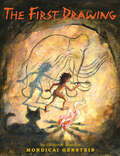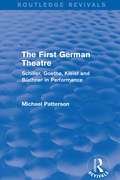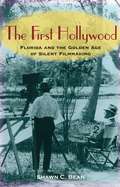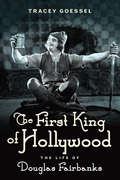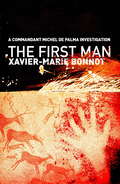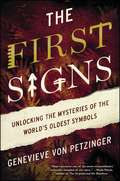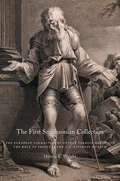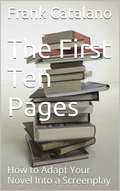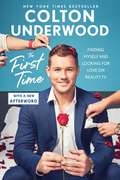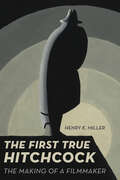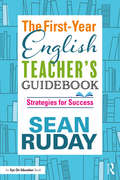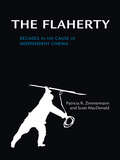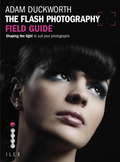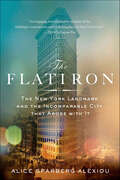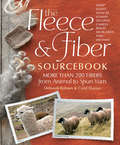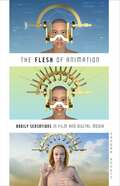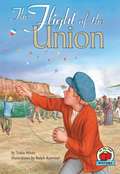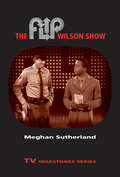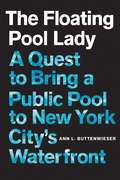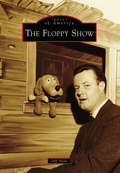- Table View
- List View
The First Days of Class: A Practical Guide for the Beginning Teacher
by Rebecca WilkeThis easy-to-use, step-by-step guide takes you through everything you need to know in your first days, weeks, and months as a new teacher, from developing your plan book and filing system in August to updating your grade book and celebrating your success in June. Chapters cover diverse learners, classroom organization and management, curriculum and instruction, lesson planning, grading systems, professional development, and more. Practical and specific advice helps you build the right classroom environment, create “essential file folders,” make a curriculum calendar, and even find the right wall art!The First Days of Class provides all the tools of the trade for new, substitute, returning, and emergency credential teachers, including: Short, easy-to-reference sections within each chapterTip boxes at the end of every chapterClassroom material samples, including “Our Classroom Rules” and a calendar of multicultural celebrationsResources that include a “A Teacher’s Ten Commandments,” Recommended Reading, and Educational websites.
The First Drawing
by Mordicai GersteinImagine you were born before the invention of drawing, more than thirty thousand years ago.You would live with your whole family in a cave and see woolly mammoths walk by!You might even see images of animals hidden in the shapes of clouds and rocks.You would want to share these pictures with your family, but wouldn't know how.Who would have made the world's first drawing? Would it have been you?In The First Drawing, Caldecott Medal winner Mordicai Gerstein imagines the discovery of drawing...and inspires the young dreamers and artists of today.
The First Frame
by Pannill CampIn the late eighteenth century, a movement to transform France's theatre architecture united the nation. Playwrights, philosophers, and powerful agents including King Louis XV rejected the modified structures that had housed the plays of Racine and Molière, and debated which playhouse form should support the future of French stagecraft. In The First Frame, Pannill Camp argues that these reforms helped to lay down the theoretical and practical foundations of modern theatre space. Examining dramatic theory, architecture, and philosophy, Camp explores how architects, dramatists, and spectators began to see theatre and scientific experimentation as parallel enterprises. During this period of modernisation, physicists began to cite dramatic theory and adopt theatrical staging techniques, while playwrights sought to reveal observable truths of human nature. Camp goes on to show that these reforms had consequences for the way we understand both modern theatrical aesthetics and the production of scientific knowledge in the present day.
The First German Theatre (Routledge Revivals): Schiller, Goethe, Kleist and Büchner in Performance
by Michael PattersonFirst published in 1990. The book surveys of the development of German theatre from a market sideshow into an important element of cultural life and political expression. It examines Schiller as ‘theatre poet’ at Mannheim, Goethe’s work as director of the court theatre at Weimar, and then traces the rapid commercial decline that made it difficult for Kleist and impossible for Büchner to see their plays staged in their own lifetime. Four representative texts are analysed: Schiller’s The Robbers, Goethe’s Iphigenia on Tauris, Kleist’s The Prince of Homburg, and Büchner’s Woyzeck. This title will be of interest to students of theatre and German literature.
The First Hollywood: Florida and the Golden Age of Silent Filmmaking
by Shawn C BeanFlorida Book Awards, Gold Medal for Florida NonfictionInside the filmmaking industry in Jacksonville before the rise of HollywoodJacksonville, Florida, was the center of the infant film industry. Devastated by fire in 1901, rebuilt in a wide variety of architectural styles, sharing the same geographic and meteorological DNA as southern California, the city was an ideal location for northern film production companies looking to relocate.In 1908, New York-based Kalem Studios sent its first crew to Jacksonville. By 1914, fifteen major companies—including Fox and Metro Pictures—had set up shop there. Oliver Hardy, D. W. Griffith, Mary Pickford, and the Barrymores all made movies in the Florida sunshine. In total, nearly 300 films, including the first Technicolor picture ever made, were completed in Jacksonville by 1928.But the city couldn't escape its past. Even as upstart Hollywood boosters sought to discredit Jacksonville, the city's influence diminished from a combination of political upheaval, simmering racial tensions, disease, and World War I. Shawn Bean uses first-person accounts, filmmaker biographies, newspaper reports, and city and museum archives to bring to light a little-known aspect of film history. Filled with intrigue, backroom shenanigans, and missed opportunities, The First Hollywood is just the kind of drama we've come to expect from the big screen.
The First King of Hollywood: The Life of Douglas Fairbanks
by Tracey GoesselThe complete, definitive biography of Hollywood's first superstar Douglas Fairbanks was the greatest leading man of his generation--the first and the best of the swashbucklers. He made some of the greatest films of the silent era, including The Thief of Bagdad, Robin Hood, and The Mark of Zorro. With Charlie Chaplin, D. W. Griffith, and his wife, film star Mary Pickford, he founded United Artists. Pickford and Fairbanks ruled Hollywood as its first king and queen for a decade. Now a cache of newly discovered love letters from Fairbanks to Pickford form the centerpiece of the first truly definitive biography of Hollywood's first king, the original Robin Hood, the true Zorro, the man who did his own stunts, built his own studio, and formed a company that allowed artists to distribute their own wealth outside the studio system. Fairbanks was fun, witty, engaging, creative, athletic, and a force to be reckoned with. He shaped our idea of the Hollywood hero, and it has never been the same since. His story, like his movies, is full of passion, bravado, and romance.
The First Man: A Commandant Michel de Palma Investigation
by Xavier-Marie BonnotCommandant Michel de Palma, known by his colleagues as 'the Baron', has chosen early retirement and plans to travel the world. But he is dragged back into the force when a case that has haunted him for a decade erupts once more. Resurfacing from Le Guen's Cave, a prehistoric grotto thirty-eight metres below sea level outside Marseilles, France, an experienced diver mysteriously gets into difficulties. Meanwhile, Thomas Autran, a serial killer with a peculiar interest in the supernatural, suffering from a dangerous form of schizophrenia, is once again on the run. Ancient cave paintings, savage murders committed according to a precise ritual: a return to the first ages of humanity, the era of the great Palaeolithic hunters. And despite the gory trail left at each crime scene, de Palma must first understand the child, the secrets of a family, a story of exploitation - and revenge - before he can track down the First Man.
The First Signs: Unlocking the Mysteries of the World's Oldest Symbols
by Genevieve von Petzinger“If you love mysteries, you’ll love this book. Genevieve von Petzinger acts as guide and sleuth in this fascinating, accessible, and fast-paced exploration of Ice Age artists and the evocative cave paintings they left behind” (Virginia Morell, author of Animal Wise and Ancestral Passions).In an adventure worthy of Indiana Jones, archeologist von Petzinger explores the little-known geometric cave art of our ancient ancestors—perhaps the first form of human written communication and a key to unlocking some of the mysteries of our ancient past. These &“remarkable&” (Jean Auel, author of the bestselling Earth&’s Children series) findings &“may represent one of the most extraordinary scientific insights of our time&” (Wade Davis, author of The Serpent and the Rainbow). Join von Petzinger as she travels throughout Europe and attempts to crack the code of these strange symbols, which persisted virtually unchanged for some 30,000 years. Clearly meaningful to their creators, these geometric signs are one of the first indicators of our human ancestors&’ intelligence and capacity for symbolic meaning and language—glimpses across millennia of an ancient consciousness linked to our own. Part travel journal, part popular science, and part personal narrative, this groundbreaking investigation explores what makes us human, how we evolved as a species, and how this cave art laid the foundation for so much of the technology that we enjoy today.
The First Smithsonian Collection
by Helena WrightIn 1849 the Smithsonian purchased the Marsh Collection of European engravings. Not only the first collection of any kind to be acquired by the new Institution, it was also the first public print collection in the nation, and it presented an important symbol of cultural authority. The prints formed part of the library of Vermont Congressman George Perkins Marsh (1801-1882), a member of the Smithsonian's Board of Regents. The uncertainty of the Smithsonian's mission in the early years complicated its motivation for purchasing the collection, especially given Marsh's position as a Regent in financial difficulty. After a serious fire in 1865, portions of the collection were deposited at the Library of Congress and the Corcoran Gallery of Art. Efforts to reclaim it began in the 1880s, as a new generation of Smithsonian staff expanded the National Museum, but they achieved only mixed success. Through the story of the Marsh Collection, the book explores the cultural values attributed to prints in the 19th century, including their prominent role in expositions and their influence on visual culture at a time when collecting styles were moving from an individual's private contemplation of artworks to wider public venues of exposition in museums and reception by multiple audiences. The history of this first Smithsonian collection enlivens an important stage in the development of American cultural identity and in the formation of the Smithsonian as a national institution.
The First Ten Pages (How to Adapt Your Novel Into a Screenplay #4)
by Frank CatalanoHOW TO HAVE A STRONG OPENING FOR YOUR SCREENPLAY SO THEY WILL READ IT TO THE END. THE FIRST TEN PAGES was first presented as part of the 25th Annual Writer's Conference sponsored by San Diego State University on February 6 through the 8th, 2009 at the Double Tree Hilton Hotel in Mission Hills, California. The following transcript was presented and recorded by Frank Catalano as part of the programs offered at the conference. The book ibased partly upon that presentation, focuses on the adaptation of an existing novel into a screenplay for presentation as a motion picture, television program or Internet content. Writers of fiction and non-fiction and industry professionals from the publishing business primarily attended the 25th Annual Writer's Conference. Mr. Catalano's seminars focused upon those writers seeking to adapt their novels into screenplays. The complete list of seminar presentations by Frank Catalano for this conference is: BOOK 1: WRITE GREAT CHARACTERS IN THE FIRST TEN PAGES BOOK 2: WRITING ON YOUR FEET - IMPROVISATIONAL TECHNIQUES FOR WRITERS - Part 1 BOOK 3: START YOUR STORY AT THE END BOOK 4: THE FIRST TEN PAGES BOOK 5: BOOK TO SCREEN BOOK 6: ACTING IT OUT - IMPROVISATIONAL TECHNIQUES FOR WRITERS - Part 2 BOOK 7: WRITE GREAT DIALOGUE
The First Time: Finding Myself and Looking for Love on Reality TV
by Colton UnderwoodFrom former football player and star of The Bachelor and The Bachelorette comes a fascinating and eye-opening behind-the-scenes look at his drama-filled season on the hit reality show. <P><P>Before Colton Underwood captured the hearts of millions on The Bachelor, he was a goofy, socially awkward, overweight adolescent who succeeded on the football field while struggling with personal insecurities off it. An All American gridiron hero, he was also a complex, sometimes confused, soft-hearted romantic wondering how these contradictions fit together. <P><P> Old-fashioned and out of step with the swipe right dating culture of today, he was saving the most intimate part of life for the love of his life. If only he could find her… <P><P>Now, in The First Time, Colton opens up about how he came to find himself and true love at the same time via the Bachelor franchise. Unencumbered by cameras and commercial breaks, he delivers a surprisingly raw, endearing, and seriously juicy account of his journey through The Bachelorette, Bachelor in Paradise, and The Bachelor, along with what has happened with him and Cassie Randolph since his season wrapped. <P><P>He opens up about being dumped by Becca, his secret dalliance with Tia, what it was like to be the world’s most famous virgin, his behind-the-scenes conflicts with production, and how his on-camera responsibilities as the Bachelor nearly destroyed him after he knew he had already fallen in love with Cassie. <P><P>A memoir for Bachelor Nation and anyone who believes in the magic of love, The First Time carries a simple but powerful message: It’s okay to laugh and cry and occasionally jump over a fence, if it means coming one step closer to the right person. <P><P><b> A New York Times Bestseller</b>
The First True Hitchcock: The Making of a Filmmaker
by Henry K. MillerHitchcock’s previously untold origin story.Alfred Hitchcock called The Lodger "the first true Hitchcock movie," the one that anticipated all the others. And yet the story of how The Lodger came to be made is shrouded in myth, often repeated and much embellished, even by Hitchcock himself. The First True Hitchcock focuses on the twelve-month period that encompassed The Lodger's production in 1926 and release in 1927, presenting a new picture of this pivotal year in Hitchcock's life and in the wider film world. Using fresh archival discoveries, Henry K. Miller situates Hitchcock's formation as a director against the backdrop of a continent shattered by war and confronted with the looming presence of a new superpower, the United States, and its most visible export—film. The previously untold story of The Lodger's making in the London fog—and attempted remaking in the Los Angeles sun—is the story of how Hitchcock became Hitchcock.
The First-Year English Teacher's Guidebook: Strategies for Success
by Sean RudayThe First-Year English Teacher’s Guidebook offers practical advice and recommendations to help new English teachers thrive in the classroom. Each chapter introduces a concept crucial to a successful first year of teaching English and discusses how to incorporate that concept into your daily classroom practice. You’ll find out how to: Clearly communicate instructional goals with students, parents, and colleagues; Incorporate students' out-of-school interests into the curriculum; Use assignment-specific rubrics to respond to student writing in meaningful ways; Integrate technology into ELA instruction; Conduct student-centered writing conferences; Make time for self-care and self-improvement; and much, much more. Additionally, the guidebook provides a number of forms, templates, graphic organizers, and writing prompts that will enable you to put the author’s advice into immediate action. These tools are available for download on the book’s product page: www.routledge.com/9781138495708.
The Flaherty: Decades in the Cause of Independent Cinema
by Scott Macdonald Patricia R. ZimmermannThis is the inspiring story of The Flaherty, one of the oldest continuously running nonprofit media arts institutions in the world, which has shaped the development of independent film, video, and emerging forms in the United States over the past 60 years. Combining the words of legendary independent filmmakers with a detailed history of The Flaherty, Patricia R. Zimmermann and Scott MacDonald showcase its history and legacy, amply demonstrating how the relationships created at the annual Flaherty seminar have been instrumental in transforming American media history. Moving through the decades, each chapter opens with a detailed history of the organization by Zimmermann, who traces the evolution of The Flaherty from a private gathering of filmmakers to a small annual convening, to today’s ever-growing nexus of filmmakers, scholars, librarians, producers, funders, distributors, and others associated with international independent cinema. MacDonald expands each chapter by giving voice to the major figures in the evolution of independent media through transcriptions of key discussions galvanized by films shown at The Flaherty. The discussions feature Frances Flaherty, Robert Gardner, Fred Wiseman, Willard Van Dyke, Jim McBride, Michael Snow, Hollis Frampton, Erik Barnouw, Barbara Kopple, Ed Pincus, Trinh T. Minh-ha, Bruce Conner, Peter Watkins, Su Friedrich, Marlon Riggs, William Greaves, Ken Jacobs, Kazuo Hara, Mani Kaul, Craig Baldwin, Bahman Ghobadi, Eyal Sivan, and many others.
The Flash Photography Field Guide: Shaping The Light To Suit Your Photographs (Field Guide Ser.)
by Adam DuckworthShooting with any kind of flash - whether it's a simple light on your camera, a remotely-triggered unit, or a complete studio setup - completely changes the photographic experience. <P><P> No longer do you simply need to be aware of light; now you need to know how to shape it to your own ends. The Flash Photography Field Guide, small enough to be taken on the most arduous shoot, will show you exactly how to do this, whether you're shooting models in a studio, live sports events, or something as personal and special as your friend's wedding. This book covers the details of setting up and using modern TTL flash systems, and the creative and technical choices you'll come across, from syncing the flash with the camera to modifying the quality of the light.
The Flash Photography Field Guide: Shaping the Light to Suit YourPhotographs (Field Guide Ser.)
by Adam DuckworthShooting with any kind of flash whether a simple light on your camera, a remotely-triggered unit, or a complete studio setup completely changes the photographic experience. No longer do you simply need to be aware of light; now you need to know how to shape it to meet your needs.The Flash Photography Field Guide will show you exactly how to do this, whether you're shooting models in a studio, live sports events, or something as special as the wedding of a loved one. This book covers the details of setting up and using modern TTL flash systems, and the creative and technical choices you'll come across, from syncing the flash with the camera to modifying the quality of the light.
The Flash: The Scarlet Speedster from Page to Screen
by Insight EditionsMeet Barry Allen, the Super Hero called The Flash, in this delightful illustrated storybook!Race along with The Flash in a brand-new adventure. Featuring adorable artwork and an original story inspired by the film, The Flash Illustrated Storybook is a perfect companion to the movie that that will be in theaters November 4, 2022.
The Flatiron: The New York Landmark and the Incomparable City That Arose with It
by Alice Sparberg AlexiouThe marvelous story of the Flatiron: the instantly recognizable building that signaled the start of a new era in New York history.Critics hated it. The public feared it would topple over. Passersby were knocked down by the winds. But even before it was completed, the Flatiron Building had become an unforgettable part of New York City. The Flatiron Building was built by the Chicago-based Fuller Company--a group founded by George Fuller, "the father of the skyscraper"--to be their New York headquarters. The company's president, Harry Black, was never able to make the public call the Flatiron the Fuller Building, however. Black's was the country's largest real estate firm, constructing Macy's department store, and soon after the Plaza Hotel, the Savoy Hotel, and many other iconic buildings in New York as well as in other cities across the country. With an ostentatious lifestyle that drew constant media scrutiny, Black made a fortune only to meet a tragic, untimely end.In The Flatiron, Alice Sparberg Alexiou chronicles not just the story of the building but the heady times in New York at the dawn of the twentieth century. It was a time when Madison Square Park shifted from a promenade for rich women to one for gay prostitutes; when photography became an art; motion pictures came into existence; the booming economy suffered increasing depressions; jazz came to the forefront of popular music--and all within steps of one of the city's best-known and best-loved buildings.
The Fleece & Fiber Sourcebook: More Than 200 Fibers, from Animal to Spun Yarn
by Carol Ekarius Deborah RobsonThis one-of-a-kind encyclopedia shines a spotlight on more than 200 animals and their wondrous fleece. Profiling a worldwide array of fiber-producers that includes northern Africa’s dromedary camel, the Navajo churro, and the Tasmanian merino, Carol Ekarius and Deborah Robson include photographs of each animal’s fleece at every stage of the handcrafting process, from raw to cleaned, spun, and woven. The Fleece & Fiber Sourcebook is an artist’s handbook, travel guide, and spinning enthusiast’s ultimate reference source all in one.
The Flesh of Animation: Bodily Sensations in Film and Digital Media
by Sandra AnnettHow animation can reconnect us with bodily experiences Film and media studies scholarship has often argued that digital cinema and CGI provoke a sense of disembodiment in viewers; they are seen as merely fantastic or unreal. In her in-depth exploration of the phenomenology of animation, Sandra Annett offers a new perspective: that animated films and digital media in fact evoke vivid embodied sensations in viewers and connect them with the lifeworld of experience. Starting with the emergence of digital technologies in filmmaking in the 1980s, Annett argues that contemporary digital media is indebted to the longer history of animation. She looks at a wide range of animation—from Disney films to anime, electro swing music videos to Vocaloids—to explore how animation, through its material forms and visual styles, can evoke bodily sensations of touch, weight, and orientation in space. Each chapter discusses well-known forms of animation from the United States, France, Japan, South Korea, and China, examining how they provoke different sensations in viewers, such as floating and falling in Howl&’s Moving Castle and My Beautiful Girl Mari, and how the body is mediated in films that combine animation and live action, as seen in Who Framed Roger Rabbit and Song of the South. These films set the stage for an exploration of how animation and embodiment manifest in contemporary global media, from CGI and motion capture in Disney&’s &“live action remakes&” to new media installations by artists like Lu Yang. Leveraging an array of case studies through a new approach to film phenomenology, The Flesh of Animation offers an enlightening discussion of why animation provides a sensational experience for viewers not replicable through other media forms.
The Flight Of The Union
by Ralph L. Ramstad Tekla WhiteIn 1847 the people of Niagara Falls, New York and their neighbors in Canada wanted to build a bridge across the river that separated them. The first step was to get a line from one side to the other. Only a kite flown with great skill could do the job. Tekla White tells the story, based on real events, of young Homan Walsh and the kite he called the Union. Ralph Ramstad's illustrations beautifully depict Homan's history-making effort near Niagara Falls.
The Flip Wilson Show: Flip Wilson Show
by Meghan SutherlandAnalyzes the social, political, and institutional context of The Flip Wilson Show, which ran on NBC between 1970 and 1974.
The Floating Pool Lady: A Quest to Bring a Public Pool to New York City's Waterfront
by Ann L. ButtenwieserWhy on earth would anyone want to float a pool up the Atlantic coastline to bring it to rest at a pier on the New York City waterfront? In The Floating Pool Lady, Ann L. Buttenwieser recounts her triumphant adventure that started in the bayous of Louisiana and ended with a self-sustaining, floating swimming pool moored in New York Harbor.When Buttenwieser decided something needed to be done to help revitalize the New York City waterfront, she reached into the city's nineteenth-century past for inspiration. Buttenwieser wanted New Yorkers to reestablish their connection to their riverine surroundings and she was energized by the prospect of city youth returning to the Hudson and East Rivers. What she didn't suspect was that outfitting and donating a swimming facility for free enjoyment by the public would turn into an almost-Sisyphean task. As she describes in The Floating Pool Lady, Buttenwieser battled for years with politicians and struggled with bureaucrats as she brought her "crazy" scheme to fruition. From dusty archives in the historic Battery Maritime Building to high-stakes community board meetings to tense negotiations in the Louisiana shipyard, Buttenwieser retells the improbable process that led to a pool named The Floating Pool Lady tying up to a pier at Barretto Point Park in the Bronx, ready for summer swimmers.Throughout The Floating Pool Lady, Buttenwieser raises consciousness about persistent environmental issues and the challenges of developing a constituency for projects to make cities livable in the twenty-first century. Her story and that of her floating pool function as both warning and inspiration to those who dare to dream of realizing innovative public projects in the modern urban landscape.
The Flood of 2013
by Naheed Nenshi HeraldThe Flood of 2013 chronicles an unforgettable summer of angry rivers, unprecedented flooding and undeniable human spirit. This book looks at how the disaster irrevocably changed southern Alberta and its people. In the face of disaster, Albertans showed their true grit and rose above adversity-just like their ancestors did for generations before them.The flood began in southern Alberta on June 20 and led to four deaths, billions of dollars in damage and more than 100,000 people fleeing their homes to escape raging waters. More than eighty Herald journalists-photographers, writers, editors, videographers, researchers and digital producers-became involved in narrating the tale of the flood. Using their words and images, this stunning volume captures not only the devastation and destruction of the flood but also the emergence of heroes and heartfelt moments. Neighbours helped neighbours. Strangers helped strangers. And Albertans vowed to recover, come hell or high water.
The Floppy Show
by Jeff SteinIn 1957, WHO-TV asked staff performer Duane Ellett to come up with an idea to help teach children how to better care for their pets. Ellett created Floppy, a high-voiced beagle dog puppet that became his sidekick for the next 30 years. Together, the iconic duo made 200 personal appearances every year at community festivals and events. The Floppy Show aired weekday afternoons in part of four decades, featuring a live studio audience of children telling Floppy riddles, beeping his nose for luck, and watching cartoons. On weekends, the duo appeared in a variety of programs over time, from the S.S. Popeye in earlier years to The Floppytown Gazette in the 1980s, featuring Floppy and other puppets Ellett created. Thousands of Iowans outside of Des Moines discovered the duo from their performances at the Iowa State Fair. Even now, 30 years after their last television appearance, Duane and Floppy still hold a warm place in the hearts of baby boomers across America.

